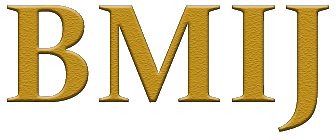
Yayınlanmış 28.08.2019
Anahtar Kelimeler
- Organizational Change, Competitive Advantage, Business Size, Chabahar-Industrial Zone
- Örgütsel Değişim, Rekabetçi Avantaj, İşletme Büyüklüğü, Chabahar-Sanayi Bölgesi
Nasıl Atıf Yapılır
Nasıl Atıf Yapılır
Öz
Örgütsel değişim rekabetçi avantaj sağlamada en etkili yollardan biridir. Yazında örgütsel değişim ile rekabetçi avantaj ilişkisinde işletme büyüklüğünün aracılık etkisi konusunda sınırlı bilgi yer almaktadır. Buradan hareketle, bu çalışmanın amacı, örgütsel değişimin rekabet üstünlüğü elde etmeye olan etkisinin belirlenmesi ve işletme büyüklüğünün bu ilişkideki düzenleyici etkisinin ortaya konulmasıdır. Veri, Chabahar-Sanayi Bölgesi (İran) çalışanlarından elde edilmiştir. Toplamda 233 geçerli anket toplanmıştır. Veri; tanımlayıcı istatistik, Açıklayıcı Faktör Analizi, Doğrulayıcı Faktör Analizi, Doğrusal Regresyon teknikleriyle analiz edilmiş ve işletme büyüklüğünün aracılık rolü PROCESS yazılımı ile incelenmiştir. Bulgular, örgütsel değişimin rekabetçi avantaj üzerinde pozitif etkiye sahip olduğunu ve işletme büyüklüğünün bu ilişkide aracı role sahip olduğunu göstermiştir.
Referanslar
Al-Ameri, M. (2013a). Assessing Resistance to Technological Change for Improved Job Performance in the UAE (Public Sectors). (Degree of Doctor of Philosophy), University of Salford, Salford, UK.
AL-Ameri, M. (2013b). Assessing Resistance to Technological Change for Improved Job Performance in the UAE (Public Sectors) (Doctor of Philosophy), University of Salford, UK.
Al-Haddad, S., and Kotnour, T. (2015). Integrating The Organizational Change Literature: A Model For Successful Change. Journal of Organizational Change Management, 28(2), 234-262.
Al-Qatawneh, M. I. (2014). The Impact of Organizational Structure on Organizational Commitment: A Comparison between Public and Private Sector Firms in Jordan. European Journal of Business and Management, 6(12), 30.
Alawamleh, H. S. (2013). Impact of Organizational Structure on Knowledge Management in the Jordanian Insurance Companies: From the Perspective of the Supervisory Leadership International Journal of Business and Social Science, 4(11), 83.
Albert, M. N. F. (2002). Gaining and Sustaining a Competitive Advantage in an Optometric Practices. (degree Master ), The Rand Afrikaans University.
Albrecht, S. L., Bakker, A. B., and Gruman, J. A. (2015). Employee Engagement, Human Resource Management Practices and Competitive Advantage: An integrated approach. Journal of Organizational Effectiveness, 2(1), 7-35.
Ali, M. J., Mukulu, E., and Kihoro, J. M. (2016). Moderating Effect of Firm Size on The Relationship Between Management Participation and Firm Performance. 3(3), 223-238.
Alnawaiseh, M.-A.-L.-I., AL-Rawashdi, F.-M., and Alnawaiseh, M. (2014). The Extent of Applying Value Chain Analysis to Achieve and Sustain Competitive Advantage in Jordanian Manufacturing Companies Canadian Center of Science and Education, 7(8).
Alrubaiee, L., Agha, S., and Jamhour, M. (2012). Effect of Core Competence on Competitive Advantage and Organizational Performance. International Journal of Business and Management, 7(1).
Amah, E., Daminabo-Weje, M., and Dosunmu, R. (2013). Size and Organizational Effectiveness: Maintaining a Balance. Advances in Management & Applied Economics, 3(5), 115-123
Aslaner, E. (2010). Örgütsel Değişim Ve Yenilikçilik:Bir Özel Okul Örneği (Yüksek Lisans), Ankara Üniversitesi, Ankara.
Asuero, A. G., Sayago, A., and Gonz´alez, A. G. (2006). The Correlation Coefficient: An Overview. Critical Reviews in Analytical Chemistry, 36, 41–59.
Awwad, A. S., Khattab, A. A. A., and Anchor, J. R. (2013). Competitive Priorities and Competitive Advantage in Jordanian Manufacturing Journal of Service Science and Management, 69-79.
Ay, H. M., and Talaşlı, E. (2007). Türkiye’de Kobi’lerin İhracattaki Yeri Ve Karşilaştiklari Sorunlar. Selçuk Üniversitesi Karaman İİBF Dergisi, 174.
Baranes, E., and Bardey, D. (2004). Competition in Health Care Markets and Vertical Restraints. journal of economic, 34, 19.
Berisha, G., and Shiroka-Pula, J. (2015). Defining Small and Medium Enterprises: A Critical Review. Journal of Business, Administration, Law and Social Sciences, 1(1).
Bhansing, N. (2010). Change in Perception of Organizational Culture After Merger: The Influence of Motivation, Acceptance and Knowledge
Bloodgood, J. M. (2006). The Influence of Organizational Size and Change in financial Performance on The Extent of Organizational Change. Wiley Inter Science, 15, 241-252.
Bozkurt, O. (2014). The Impact of Client’s Firm Internal Control System, Firm Size and Repuation on The Accountant Revenue and Service Effectiveness. International Journal of Management Economics and Business, 10(21).
Cameron, K., and McNaughtan, J. (2014). Positive Organizational Change. The Journal of Applied Behavioral Science, 50(4), 445-462.
Cao, G., Clarke, S., and Lehaney, B. (2003). Diversity Management in Organizational Change: Towards a Systemic Framework. Systems Research and Behavioral Science, 20, 231-242.
Catalsakal, S. (2016). How Trait Mindfulness Is Related to Job Performance and Job Satisfaction: Self-Regulation As A Potential Mediator: Master of Science), Middle East Technical University.Organizational Change as a Strategy for Competitive Advantage at Practical Action Eastern Africa (2014).
Costa, V., and Sarmento, R. (2019). Confirmatory Factor Analysis: A Case study Retrieved from "https://arxiv.org/ftp/arxiv/papers/1905/1905.05598.pdf"
Cummings, T., Bridgman, T., and Brown, K. G. (2016). Unfreezing Change As Three Steps: Rethinking Kurt Lewin’s Legacy For Change Management. human relations, 69(1), 33-60.
Çetinkaya, A. Ş., and Rashid, M. (2018). The Effect of Social Media on Employees’ Job Performance: The mediating Role of Organizational Structure. Journal of Organizational Psychology, 18(4), 94-116.
Diab, S. M. (2014). Using the Competitive Dimensions to Achieve Competitive Advantage A Study on Jordanian Private Hospitals. International Journal of Academic Research in Business and Social Sciences, 4(9).
Diugwu, I. A. (2011). Building Competitive Advantage of Small and Medium Sized Enterprises through Knowledge Acquisition and Sharing. KJBM-KCA University, Nairobi, Kenya, 3(3), 102-120.
Doğan, M. (2013). Does Firm Size Affect The Firm Profitability? Evidence from Turkey. Research Journal of Finance and Accounting, 4(4).
Dranove, D., and White, W. D. (1994). Recent Theory and Evidence on Competition Inhospital Markets Journal of Economic and Management Strategy. Journal of Economics & Management Strategy, 3(1), 169–209.
Elow, A., Langly, A., and Montréal, H. (2013). Process Studies of Change in Organization and Management: Unveiling Temporality, Activity. Academy of Management, 56(1), 1-13.
Fleisher, C. S., and Bensoussan, B. (2003). Strategic and Competitive Analysis: Methods and Techniques for Analyzing Business Competition. New Jersey, USA: Pearson Education Publisher.
Fong, L. W., Ting, L. W., and Hui, N. M. (2011). The Impacts of Organizational Change Towards Employees‘ Performance in Banking Industry. (For The Degree of Bacherlor of Business Administration), Universiti Tunku Abdul Rahman.
Gogtay, N., and Thatte, U. (2017). Principles of Correlation Analysis Journal of The Association of Physicians of India, 65, 78-81.
Güven, C. (2006). Analytical Approach To The Occupational Safety And Health Through The Functions of Human Resources Management. (Master), Gazi Üniversitesi, Ankara.
Hana, U. (2013). Competitive Advantage Achievement through Innovation and Knowledge. Journal of Competitiveness, 5(1), 82-96.
Haveman, H. A. (1993a). Organizational Size and Change: Diversification in the Savings and Loan Industry after Deregulation. Administrative science quarterly, 38(1), 20-50.
Haveman, H. A. (1993b). Organizational Size and Change: Diversification in the Savings and Loan Industry after Deregulation 28.
Hilman, H., and Siam, M. (2014). The Influence of Organizational Structure and Organization Culture on the Organizational Performance of Higher Educational Institutions:The Moderating Role of Strategy Communication. Asian Social Science, 10(13).
Iqbal, R. (2011). Impact of Organizational Change to Achieve Competitive Edge European Journal of Business and Management, 3(4).
İraz, R., and Şimşek, G. (2010). Örgütsel Değişimin Gerçekleştirilmesinde Liderliğin Rolü:Transformasyonel Liderlik İncelemesi. Selçuk Üniversitesi İİBF Sosyal ve Ekonomik Araştırmalar Dergisi, 100.
Jusoh, R. (2010). The Influence of Perceived Environmental Uncertainty, Firm Size, and Strategy on Multiple Performance Measures Usage. African Journal of Business Management, 4(10), 1972-1984.
Keskin, Y. B., and Ünsal, A. (2004). Estimation of Business Size: An Empirical Study in the ISE Food and Drink Industry. Journal of Gazi University Faculty of Economics and Administrative Sciences, 6(2), 2.
Khan, M. A., and Hashim, M. (2014). Organizational Change: Case Study of General Motors. Paper presented at the ASEE Zone 1 Conference, University of Bridgeport, Bridgpeort, CT, USA.
Knudsen, T. (2008). Organizational Routines In Evolutionary Theory. Handbook of organizational routines, 125, 151.
Kotler, P. (2001). Marketing Management (10 ed.). Upper Saddle River, New Jersey, USA: Prentice Hall, Inc.
Koyuncugil, A. S., and Özgülbaş, N. (2008). İMKB’de İşlem gören kOBİ’lerin güçlü ve zayif yönleri: chaid karar ağaci uygulamasi Dokuz Eylül Üniversitesi İktisadi ve İdari Bilimler Fakültesi Dergisi, 23(1).
Kulakoğlu, D. (2013). Kobi’lerde Yönetim Ve Organizasyon Sorunlarinin Yaşanma Düzeyi :Ankara Kobi Örneği. (Yüksek Lisans), Gazi Üniversitesi, Ankara
Lesáková, Ľ. (2014). Small and Medium Enterprises in The New World of Globalization. Matej Bel University in Banská Bystrica, Slovakia.
Litvin, A. S. (2011). Technological Change At Work : The Impact of Employee Involvement On The Effectiveness of Health Information Technology (Vol. 64).
MaffiniGomes, C., JordanaMarquesKneipp, and IsakKruglianskas. (2015). Management For Sustainability: Ananalysis Of The Key Practices According To The Business Size. Ecological Indicators, 52, 116-127.
Malopinsky, L. V. (2007). Facilitating Organizational Change: The Use of Activity Theory As A Framework For Social Construction Of Strategic Knowledge.
Monteiro, T. M. C., Moreira, M. d. R. A., and Sousa, P. S. A. (2013). Relationship between Firm Size and Export Performance: An Exploratory Analysis Economics and Management Research Projects: An International Journal, 3(1), 9-23.
Mourfield, R. (2014). Organizational Change: A Guide to Bringing Everyone on Board. University of Indiana
Neiva, E. R., Ros, M., and Paz, M. d. G. T. d. (2005). Attitudes Towards Organizational Change: Validation of A Scale. Psychology in Spain, 9(1), 81-90.
Noori, H. (1995). Production and Operations Management: Total Quality and Responsiveness/ With Om-Companion: Mcgraw-Hill.
Nordström, C., Choi, G. E., and Llorach, C. (2012). The Organizational Life Cycle Stages and Effectiveness A Study of Swedish Gazelle Companies (Bachelor’s Thesis ), Jönköping
O’donnell, A., and Gilmore, A. (2002). Competitıve Advantage in Small To Medium Sized Enterprises. Journal Of Strategic Marketing, 10, 205-223.
Örücü, E., Kılıç, R., and Savaş, A. (2011). Innovation Strategies of SMEs and The Factors Affecting Involvement in Innovation: An Implementation Doğuş Üniversitesi Dergisi, 12(1), 58-73
Papulova, E., and Papulova, Z. (2006). Competitive Strategy and Competitive Advantages of Small and Medium sized Manufacturing Enterprises In Slovakia
Petrou, P., Demerouti, E., and Schaufeli, W. B. (2018). Crafting the Change: The Role of Employee Job Crafting Behaviors for Successful Organizational Change. Journal of Management, 44(5), 1766-1792.
Polat, M. (2012). Kriz Yönetimi Ve Örgütsel Değişim Arasindaki İlişkiler (Yüksek Lisans), Gebze Yüksek Teknoloji Enstitüsü
Quintero, S., and Adolfo, J. (2004). Organizational Change:Formulating, Implementing, and Sustaining a Fundamental -Organizational Change in South American Central Banks-Pilot Study Colombia.
Rıdvan, and Karalar. (1997). Firm Basic Information Functions. Eskişehir, Anadolu University Press, 6, 130.
Roberts, R., and Brnared, T. (2000). Operation Management (7th edition ed.). United States of America: John Wiley & Sons, Inc.
Samuels, P. (2017). Advice on Exploratory Factor Analysis. Retrieved from Centre for Academic Success, Birmingham City University:
Schermerhorn, J., Osborn, R., and Hunt, J. G. (2003 ). Organizational behavior: Wiley.
Shahmansouri, S., Esfahan, M. D., and Niki, N. (2013). Explain the Theory of Competitive Advantage and ComparisonWith Industries based on Advanced Technology. International Journal of Economy, Management and Social Sciences, 2(10), 841-848.
Shi, B. C. S. (2016). The Impact of Innovation Strategy on Organizational Learning and Innovation Performance: Do Firm Size and Ownership Type Make A Difference? South African Journal of Industrial Engineering, 27(1), 125-136.
Smollan, R. K., and Sayers, J. G. (2009). Organizational Culture, Organizational Change and Emotions: A Qualitative Study Journal of Change Management, 9(4), 435-457.
Thamer, B., and Hashem, a. S. (2006). Knowledge Marketing Management and Itreflecting On Custoumer Satisfaction To Achive Compititive Advantege. Paper presented at the Secound Conefrance, Applied Science University, Economic Faculity, Jordan-Amman.
Theodore, J. D. (2009). Organizational Size: A Key Element in The Development of Private Enterprises in The Less Developed Countries: The Case of Ecuador International Business & Economics Research Journal, 8(7), 46.
Tran, Q., and Tian, Y. (2013). Organizational Structure: Influencing Factors and Impact on a Firm. American Journal of Industrial and Business Management, 3, 229-236.
Tunçer, P. (2011). Yerel Yönetimlerde Değişim Yönetimi Ve Samsun Büyükşehir Belediyesi Alan Araştirmasi Gazi Üniversitesi, Ankara
Ulric, D., and Lake, D. (1991). Organizational Capabilities: Crreating Competitive Advantage. Academy of Management Executives, 5(1).
Wahba, M. (2014). The Impact of Organizational Structure Dimensions' on Knowledge Management Processes Comparative Study Between Manufacturing & Service Sectors In Egypt. The Journal of Developing Areas.
Wang, H.-L. (2014). Theories For Competitive Advantage. Retrieved from "https://ro.uow.edu.au/buspapers/408/"
William, B., Onsman, A., and Brown, T. (2010). Exploratory Factor Analysis: A Five-Step Guide For Novices. Journal of Emergency Primary Health Care, 8(3), 1-13.
Wilson, D. H., and Gaynor, M. (1998). Physician Networks and Their Implications For Competition in Health Care Markets. Health and Economics, 7(2), 179-182.
Yılmaz, G. (2014). Effects of Transformational Leadership on Organizational Change Management and Organizational Ambidexterity. (Master), Dokuz Eylül University.
Zümreoğlu, D. (2012). The Effect of Business Size and Sectoral Differences on Financial Ratios. (Master), Gazi Unıversıty.



